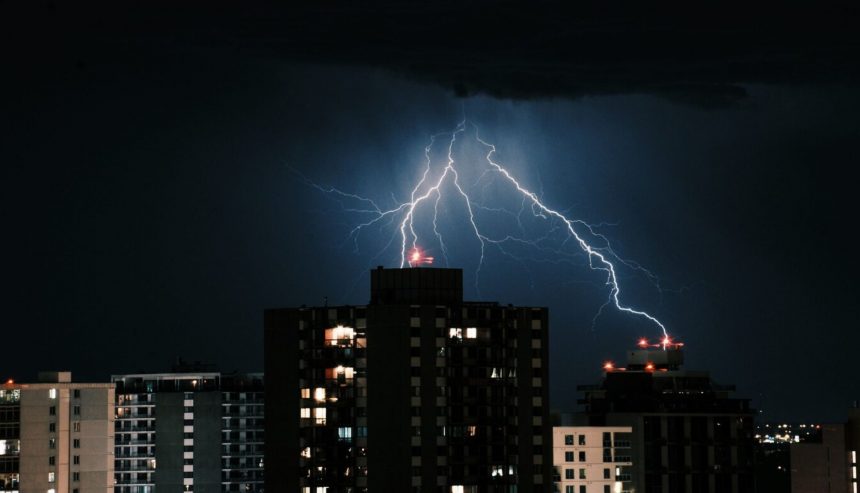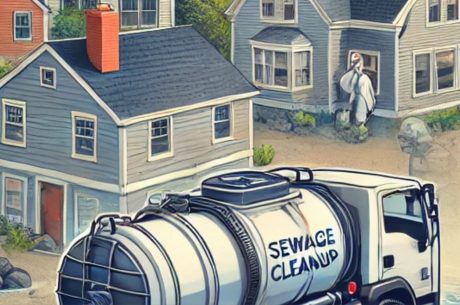Table of Contents
Natural disasters like hurricanes, tornadoes, and severe thunderstorms can leave behind significant damage, including fallen trees, scattered debris, and standing water. Cleaning up after a storm is essential to prevent further property damage, mold growth, and safety hazards. However, the process must be done carefully to avoid injuries or additional risks.
In this guide, we’ll walk you through the safest and most effective ways to remove debris and water after a storm.
1. Assess the Situation Safely
Before jumping into cleanup, prioritize safety:
- Wait for official clearance – Local authorities may declare areas unsafe due to downed power lines, gas leaks, or structural damage.
- Wear protective gear – Sturdy gloves, waterproof boots, goggles, and a mask (N95 or better) protect against sharp objects, contaminated water, and mold spores.
- Check for structural damage – If your home has significant damage, consult a professional before entering.
- Beware of electrical hazards – Avoid standing water if there’s a risk of submerged electrical wires.
2. Remove Debris Properly
Storm debris can include broken branches, roofing materials, glass, and other hazardous objects. Follow these steps for safe removal:
A. Sort Debris by Type
Separate debris into categories for easier disposal:
- Vegetative debris (tree limbs, leaves)
- Construction materials (wood, drywall, roofing)
- Household hazardous waste (chemicals, paint, batteries)
- Large appliances and electronics
B. Use Proper Tools and Techniques
- For large branches or trees: Use a chainsaw or handsaw if you’re experienced. Otherwise, hire a professional.
- For broken glass/nails: Sweep carefully and use a magnet to pick up small metal pieces.
- For heavy objects: Lift with your legs, not your back, or use machinery like a wheelbarrow.
C. Follow Local Disposal Guidelines
Many municipalities provide special storm debris pickup services. Check local regulations for:
- Curbside pickup rules (size limits, bundling branches)
- Drop-off locations for hazardous materials
- Burning restrictions (some areas prohibit burning debris)
3. Remove Standing Water Effectively
Standing water can lead to mold, structural damage, and mosquito breeding. Here’s how to remove it safely:
A. Use Pumps and Wet Vacuums
For large amounts of water: Use a submersible pump or rent a water extraction machine.
For smaller areas: A wet/dry vacuum works well for basements and crawl spaces.
B. Dispose of Contaminated Water Properly
Floodwater often contains sewage, chemicals, or bacteria:
Avoid direct skin contact—wear rubber gloves and boots.
Drain water away from your home’s foundation to prevent further damage.
Disinfect affected areas afterward (see next section).
C. Prevent Future Water Accumulation
Improve drainage by extending downspouts and grading soil away from the house.
Install a sump pump in basements prone to flooding.
4. Dry and Disinfect Affected Areas
After removing water, drying and sanitizing are crucial to prevent mold and bacteria growth.
A. Speed Up Drying
Use fans and dehumidifiers to circulate air and reduce moisture.
Open windows (if weather permits) to improve ventilation.
Remove wet carpets and padding—if not dried within 48 hours, they may need replacement.
B. Disinfect Surfaces
Hard surfaces: Use a bleach solution (1 cup bleach to 1 gallon of water) or EPA-approved disinfectants.
Porous materials: Upholstered furniture and mattresses may need professional cleaning or disposal.
Prevent mold: Apply antimicrobial treatments to walls and flooring if necessary.
5. Handle Hazardous Materials with Care
Storms can displace dangerous substances like:
Fuel or oil spills – Use absorbent materials (kitty litter, sand) and dispose of them properly.
Chemical leaks – Avoid direct contact and call hazardous waste disposal services.
Asbestos (in older homes) – If damaged insulation or tiles are present, hire a licensed abatement team.
6. Know When to Call Professionals
Some cleanup tasks are too dangerous for DIY efforts. Seek professional help for:
- Structural damage (cracked walls, foundation issues)
- Electrical or gas hazards
- Large-scale mold infestations
- Sewage-contaminated water removal
7. Prepare for Future Storms
Once cleanup is complete, take steps to minimize future storm damage:
- Trim trees and secure loose outdoor items before storm season.
- Install flood barriers or sandbags if you live in a flood-prone area.
- Review insurance policies to ensure coverage for storm-related damage.
Final Thoughts
Cleaning up after a storm is a challenging but necessary task. By following these safety guidelines—removing debris carefully, extracting water properly, and disinfecting affected areas—you can restore your property while minimizing health risks.
For storm damage cleanup and remediation- Call (207) 531-1200
If the storm damage is extensive, don’t hesitate to contact restoration professionals for assistance on (207) 531-1200. Taking the right steps now can help you recover faster and protect your home from future storms.




 PuroClean of Auburn
PuroClean of Auburn